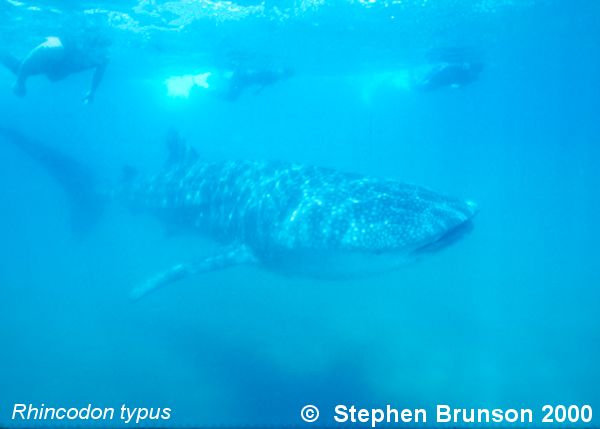








Whale Shark: Rhincodon typus
The largest shark and largest fish in the sea, little was known about the whale shark until 1828, when Dr. Andrew Smith bought the hide of a fifteen-foot shark from fisherman in South Africa and sent it to the National Museum of Natural History in Paris. It has as many as 15,000 tiny teeth, packed into rows that run along the inner surface of each jaw, just inside the lips. The teeth are not used for biting or crushing food but for holding whatever is scooped into the mouth. The whale shark can reach lengths of up to 65 feet. A whale shark caught near Havana Harbor weighed approximately 18,000 lbs. (9 tons). Its heart weighed 43 lbs and its liver weighed 900 lbs! Whale sharks are pelagic in the tropical seas of the Atlantic, Pacific, and Indian Oceans, usually in a worldwide range roughly between 30 degrees north and 35 degrees south.

Print Number - WS013
Limited Edition signed color photography for sale by Stephen Brunson
Whale Shark Statistics:
Weight: Up to 26,800 lbs (13 tons)
Length: Max. known size - 60 Ft
Pectoral Fin Size: More than 6 Ft 6 In
Mating Season: Unknown
Number of Teeth: Up to 15,000 tiny teeth
Typical Diet: Mainly shrimp and plankton; also small fish and crustaceans
Number of Eggs: Unknown; Young hatch from Egg Capsules
Habit: Eating vertically, plunging up and down through schools of small fish
Related Species: The Blue Whale, Basking Shark, and the Manta Ray have feeding systems similiar to the Whale Sharks
Danger to Humans:
Whale sharks are amazingly docile, giving snorkelers and scuba divers rides on their dorsal fin
BrunsonImages@att.net


















